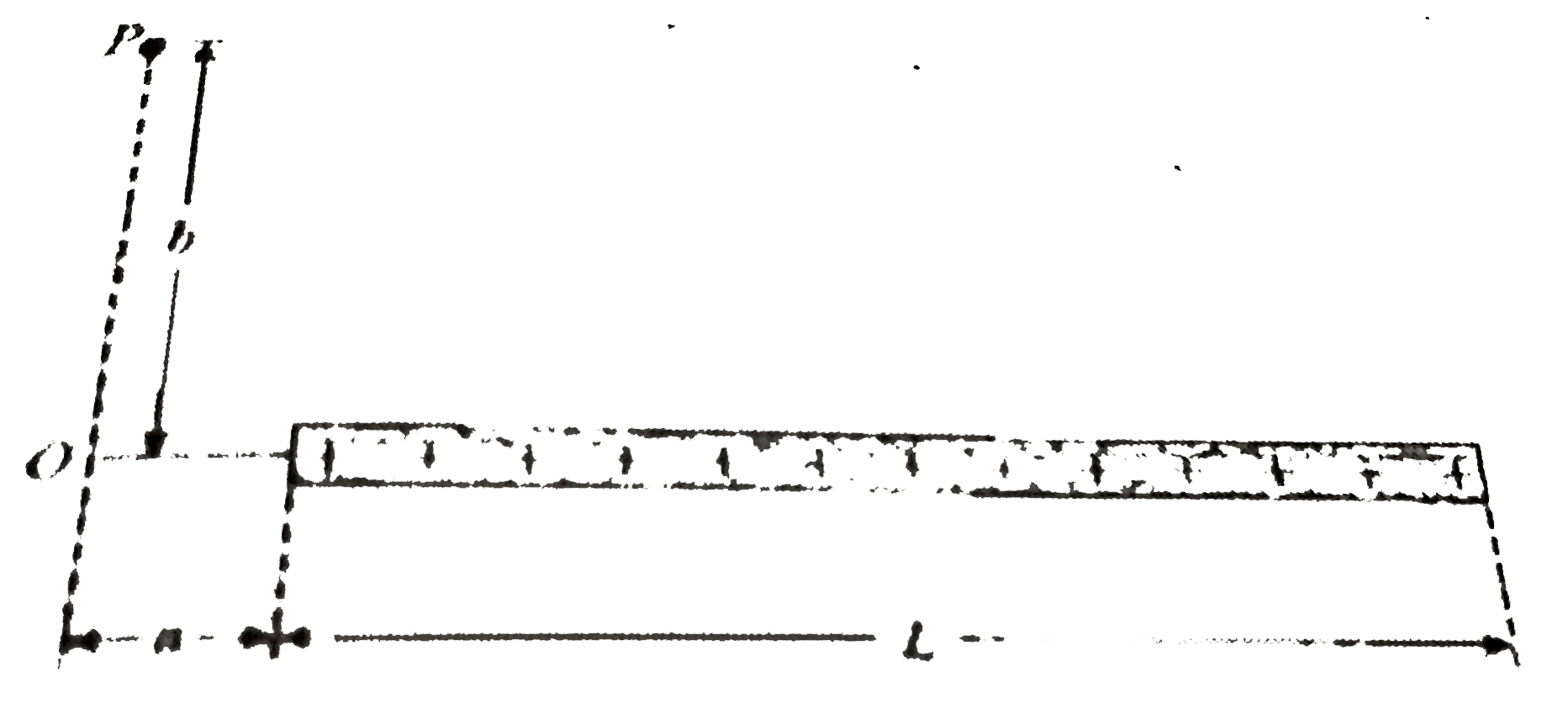Answer
Step by step text solution for Calculate the potential due to a thin uniformly charged rod of length L at the poiot P shown in figure. The lioear charge density of the rod is lambda C//m by PHYSICS experts to help you in doubts & scoring excellent marks in Class 12 exams.
|
Topper's Solved these Questions
ELECTROSTATICS
PHYSICS GALAXY - ASHISH ARORA|Exercise Partice Exercise 1.1|1 VideosView PlaylistELECTROSTATICS
PHYSICS GALAXY - ASHISH ARORA|Exercise Partice Exercise|93 VideosView PlaylistELECTROMAGNETIC INDUCTION AND ALTERNATING CURRENT
PHYSICS GALAXY - ASHISH ARORA|Exercise Advance MCQs|33 VideosView PlaylistGEOMETRICAL OPTICS
PHYSICS GALAXY - ASHISH ARORA|Exercise Unsolved Numerical Problems|107 VideosView Playlist
Similar Questions
Explore conceptually related problems
Knowledge Check
Similar Questions
Explore conceptually related problems
PHYSICS GALAXY - ASHISH ARORA-ELECTROSTATICS-Unsolved Numberical Problems
- Calculate the potential due to a thin uniformly charged rod of length ...
09:22
|
Playing Now - A small sphere is charged uniformly and placed at point A (u, v) so th...
12:39
|
Play - The electric intensity Eat a point on the axis ofa ring of radius a at...
04:00
|
Play - Two long wires each oflength I are placed on a smooth horizontal table...
04:14
|
Play - Four charges +50 xxI0^(-9)C, -12 xx I0^(-19)C, + 36 xx I0^(-9)C " and ...
02:53
|
Play - A solid conducting sphere of radius R is placed in a uniform electric ...
Text Solution
|
Play - Suppose in an insulating medium, having di-electric constant k= 1, vol...
15:05
|
Play - Two short dipoles phat(k) and P/2 hat(k) are located at (0,0,0) & (1m,...
05:25
|
Play - Two long straight parallel wires carry charges lambda(1) and lamda(2) ...
01:34
|
Play - Find the magnitude of uniform electric field E of which the direction ...
07:04
|
Play - Two short electric dipoles having dipole moment p(1)" and "p(2) are ...
06:55
|
Play - Three identically charged, small spheres each of mass m are suspended ...
05:35
|
Play - Two horizontal parallel conducting plates are kept at a separation d =...
08:46
|
Play - A small cork ball A of mass m is suspended by a thread of length I. An...
10:45
|
Play - A particle of mass m having negative charge q moves along an ellipse a...
Text Solution
|
Play - Two concentric spheres of radii R and 2R are charged. The inner sphere...
01:55
|
Play - A charged particle of radius 5xx10^(-7)m is located in a horizontal el...
04:13
|
Play - Two small balls having the same mass and charge and located on the sam...
04:22
|
Play - What is the percentage change in distance if the force of attraction b...
02:36
|
Play - two concentric rings of radii r and 2rare placed with centre at origin...
13:44
|
Play - Find the electric field strength vector at the centre of a ball of rai...
10:50
|
Play
